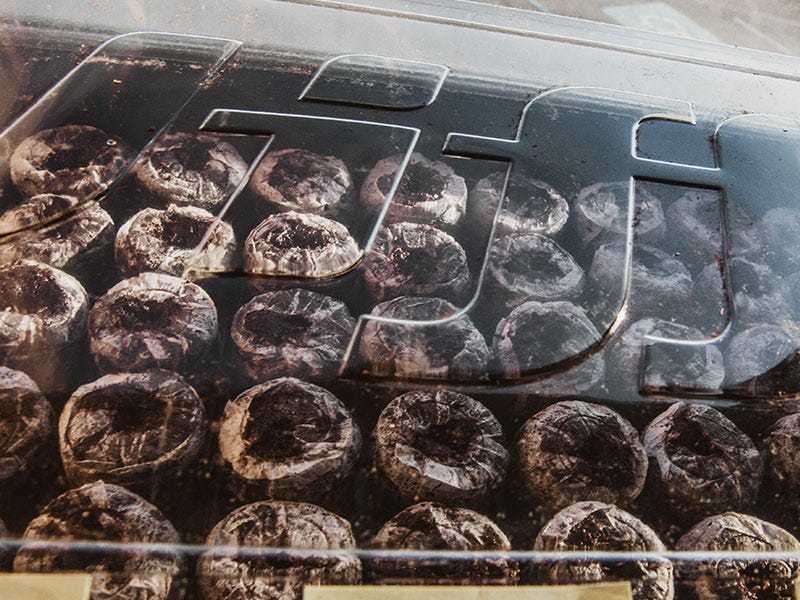Starting Seeds Indoors: What You Need to Make Your Seedlings Successful

By Amy Grisak
What are the best materials for starting seeds indoors? How do you give your seedlings the best chance for healthy growth? Our Home, Lawn, and Garden Expert, Amy Grisak, walks you through what you need to keep your seeds healthy and ready to plant outside come spring.
Video Transcription
Get Those Seeds Started in the Springtime
This is Amy from North 40 Outfitters, and today I'm going to give you some ideas on what you need to get those seeds started in the springtime.
The days are getting longer and we all have our packets of seeds and we can't wait to get going, but you have to have a few supplies to make sure your little seedlings are going to be successful before you plant them in the garden this spring. Thankfully, we don't need a whole lot of supplies for starting seeds indoors, but to have some of the right tools is really, really helpful to make sure everything is successful.
Greenhouses and Good Soil
One of my favorite things to use are these instant greenhouses. So it's the tray underneath with the nice cap on top which really holds in that moisture, because one of the hardest parts, especially in the winter when it's so dry, is the soil dries out and our seedlings dry out so quickly. So, it's really handy to have this nice feature on top that allows light through when the seedlings are little and also keeps that moisture in. But if you don't have one of these, that is absolutely fine. We have great containers. You can recycle containers and just use about anything you want to when you're getting them going.
Now, one of the things that is really important to start with is good soil. You want to use a fresh potting soil, you really don't want to use a potting soil that you had last year. These are too sensitive, the seedlings are too sensitive and they're too susceptible to disease. So if there's anything in them, which might not affect a grown plant at all, but it could wipe out everything you've started. Since it often takes four to six to even 12 weeks to start some of these seedlings, you don't want to lose all that work because of bad soil. So, definitely start with a new really, really good soil.
Nice Water and Soluble Fertilizer
Now when you're starting your seeds, it's simple enough. We all did it in grade school. You fill a container with your soil and you put in your seed or seeds, and then you want to water. Now, the best way to water is from underneath. So if you have something like these Jiffies, you can set them in water, but really don't fret if you can't, it is absolutely fine to pour and sprinkle. You just want to watch so you're not oversaturating things. So you want the soil nice and damp, but we're not going with hydroponics here, so you don't want things floating. Just keep that in mind. You want it damp, but not too, too wet.
When you first plant your seeds, one thing you don't have to worry about is light, because seeds typically do not need light to germinate. So, you just want to find a nice warm spot that's out of the way where the kids and the cat or the dog aren't going to get it and just keep peeking at them. So just keep looking, and once you start to see that green emerge from the soil, that's when you're going to bring it out and you're going to get light on it.
That's the tricky part at this time of the year. A lot of people use the window sills, which is just great if you can move your plants from window sill to window sill, because you typically are going to want 12 minimum, 14, 16 hours of light a day for optimum growth during this time. So if you have plenty of sunny windows, that's great and a lot of time to move them, that's great, but if not, we have phenomenal growing lights anymore. Here's just one.
Advantage of LED Glow Lights
These LED grow lights are energy-efficient, they have a full range of the light waves and everything, and they're getting easier to use all the time. So definitely look into those, because the biggest thing you're going to notice if your plants are struggling, most of the time it's because not enough light. So when those plants are getting real leggy and stringy, that's your clue that's not enough light. When you're using glow lights, take a look at what the specific light recommends, but a lot of times you're going to keep those lights four to six inches above your plant, and you want to try to keep it as even over the plants too.
So you need container, soil and light and water, and those are the basics for starting your seeds. The biggest thing is don't over-water as your seeds are growing, keep that light on them and just keep them going, and pretty soon spring is going to be here and we're all going to be playing outside in the garden. If you need equipment like this or you need seeds or more information, visit any of our stores or visit North40.com.
